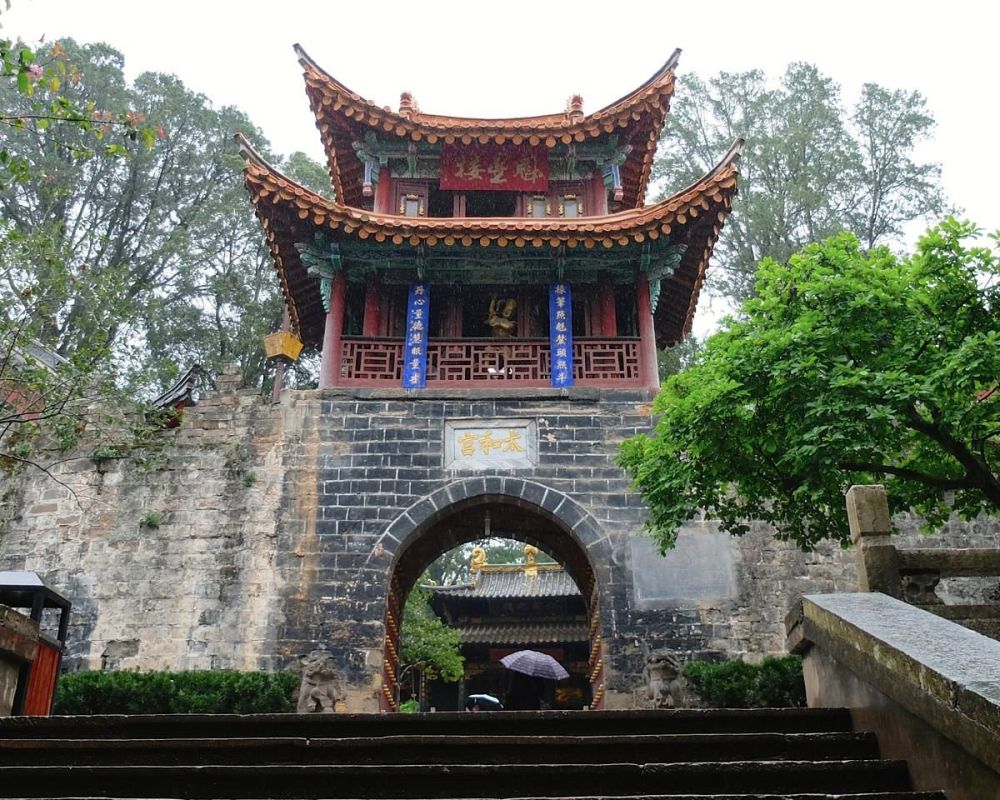

The Golden Temple Park, known locally as 'Jin Dian,' is a historically significant landmark situated on Mingfeng Hill (Singing Phoenix Hill) in the northeast of Kunming, the capital of Yunnan Province, China. The park's history is intertwined with the evolution of tourism in the region, attracting both domestic and international visitors with its unique blend of natural beauty, cultural significance, and historical architecture.
The focal point of the park is the magnificent Taihe Temple, commonly referred to as the Golden Temple due to its all-bronze structure. Although the history of the temple dates back to the Ming Dynasty, the current structure was rebuilt during the Qing Dynasty in 1671 under orders from Wu Sangui, the Prince of Pingxi. The temple is crafted from approximately 250 tons of solid bronze, making it the largest bronze-made structure in China, renowned for its gleaming appearance when the sun casts its rays upon it.
Throughout the centuries, the Golden Temple and its surrounding park have encapsulated the changing face of China's spiritual, cultural, and social dynamics. It was built as a Daoist temple, embodying Daoist principles of harmony between humanity and nature, a theme that is evident in the temple's serene surroundings.
Modern tourism at the Golden Temple Park really began to develop in the latter part of the 20th century as China opened its doors to international visitors. The park's blend of history and natural landscapes like the Camellia Garden and Azalea flowers, along with panoramic views of Kunming city, made it an appealing destination for tourists seeking both cultural insights and natural beauty.
In recent years, the park has seen a steady increase in the number of visitors, both local and international. Efforts have been made by Chinese authorities to preserve the natural environment while also providing amenities that modern visitors expect. This has included the restoration of historical sites within the park, the development of visitor facilities, and the implementation of interpretive signage in multiple languages.
One of the latest tourism trends is the increasing interest in immersive and authentic experiences. Visitors to Golden Temple Park are now often seeking in-depth cultural tours that include insights into Daoist practices, Tai Chi demonstrations, and even tea ceremonies that reflect the local traditions.
Wellness tourism has also gained traction, with the tranquil park serving as a perfect setting for those looking to escape urban stresses. Additionally, modern photography and the proliferation of social media have made the park a hotspot for those looking to capture its natural beauty, particularly during the blooming seasons or at sunrise when the temple glows golden, and the city below is just waking.
Responsible tourism practices have also been promoted, emphasizing the need to preserve the cultural and historical integrity of the site while minimizing environmental impact. The combination of these trends points towards a holistic approach to the visitor experience at Golden Temple Park, ensuring it remains a treasured destination for generations to come.
Golden Temple Park stands today not just as a stunning piece of historical architecture but as a symbol of Kunming's dedication to preserving its past while embracing the future of tourism. As visitors from around the world continue to explore its rich history and vibrant culture, the park will undoubtedly maintain its status as one of the city's most cherished treasures.